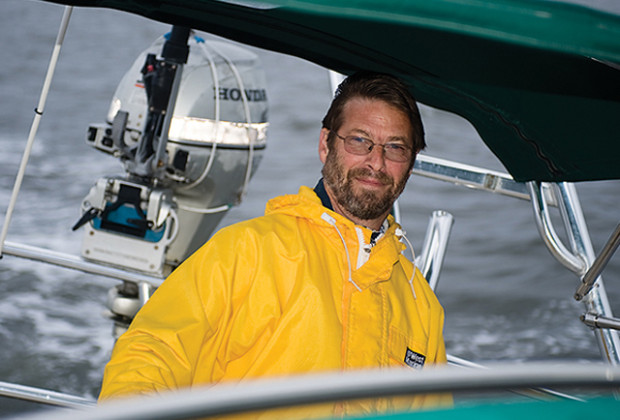
BERMUDA RECTANGLE
Every winter, cruising boats heading from the East Coast to the Caribbean are abandoned in bad weather and their crews rescued by the Coast Guard or a nearby ship. Often this occurs in a region that has for centuries been infamously known as the Bermuda Triangle, the patch of water described by a triangle with Bermuda at its top, Miami, Florida to the west and Puerto Rico on the south.
There are all sorts of theories about what makes the triangle so dangerous that range from alien abductions to sea monsters to magnetic anomalies to vast underwater sinkholes that swallow up ships. In ages past when little was known scientifically about the oceans and our earth’s climate, mysteries abounded and legends grew to describe the unknown.
Today, we have a better idea of what is going on out there and don’t have to rely on legends for explanations. To my mind, though, the triangle should really be the Bermuda Rectangle, using the three points of the triangle and adding a fourth at Cape Hatteras. (It’s really a quadrilateral but rectangle sounds better.) The reason for this is that so many seafaring mishaps and disasters have and still do occur in the waters southeast of Hatteras as well as out in the region of the triangle.
The factors that contribute to the sudden and violent weather patterns that you can find in the rectangle flow from the combined forces of the Gulf Stream, the Jet Stream over the continent, the warm moist air that rises over the Gulf of Mexico and the stream of low pressure systems that ride the Jet Stream from west to east. All of these forces meet in the rectangle. Often, the region southeast of Hatteras on the southeast side of the Gulf Stream is the most active and dangerous spot.
In summer, when the Atlantic is warm and the Jet Stream is flowing across the continent fairly far to the north, the rectangle will see fewer sudden storms. But from fall right through spring, the more dangerous weather pattern comes into play. Experienced sailors who have navigated through the Bermuda Rectangle know that from late spring to early fall you can get good weather windows that will last up to a week. This is the time they choose to sail south or north through the rectangle.
They also know that starting around November 1, the low pressure systems that are created by this confluence of weather factors become much more common. Right through the winter it is very hard to find a weather window in the Bermuda Rectangle that lasts more than three days and often these windows are measured in hours instead of days.
That’s why prudent skippers heading south to the Caribbean for the winter from the East Coast will do their utmost to be underway as soon after November 1 as possible. The rule of thumb is that you can leave from north of Hatteras up until November 15. After that you should head down the East Coast and depart from Beaufort, Charleston or even Jacksonville on a northwest clearing breeze that follows a passing low pressure system. Riding that breeze east, you try to get south of Bermuda before turning south to cross the easterly trade winds that you will sail in all winter.
No cruising sailor or delivery skipper has to sail through the top of the Bermuda Rectangle in winter. Those who do put themselves and their potential rescuers at an unnecessary risk.

















